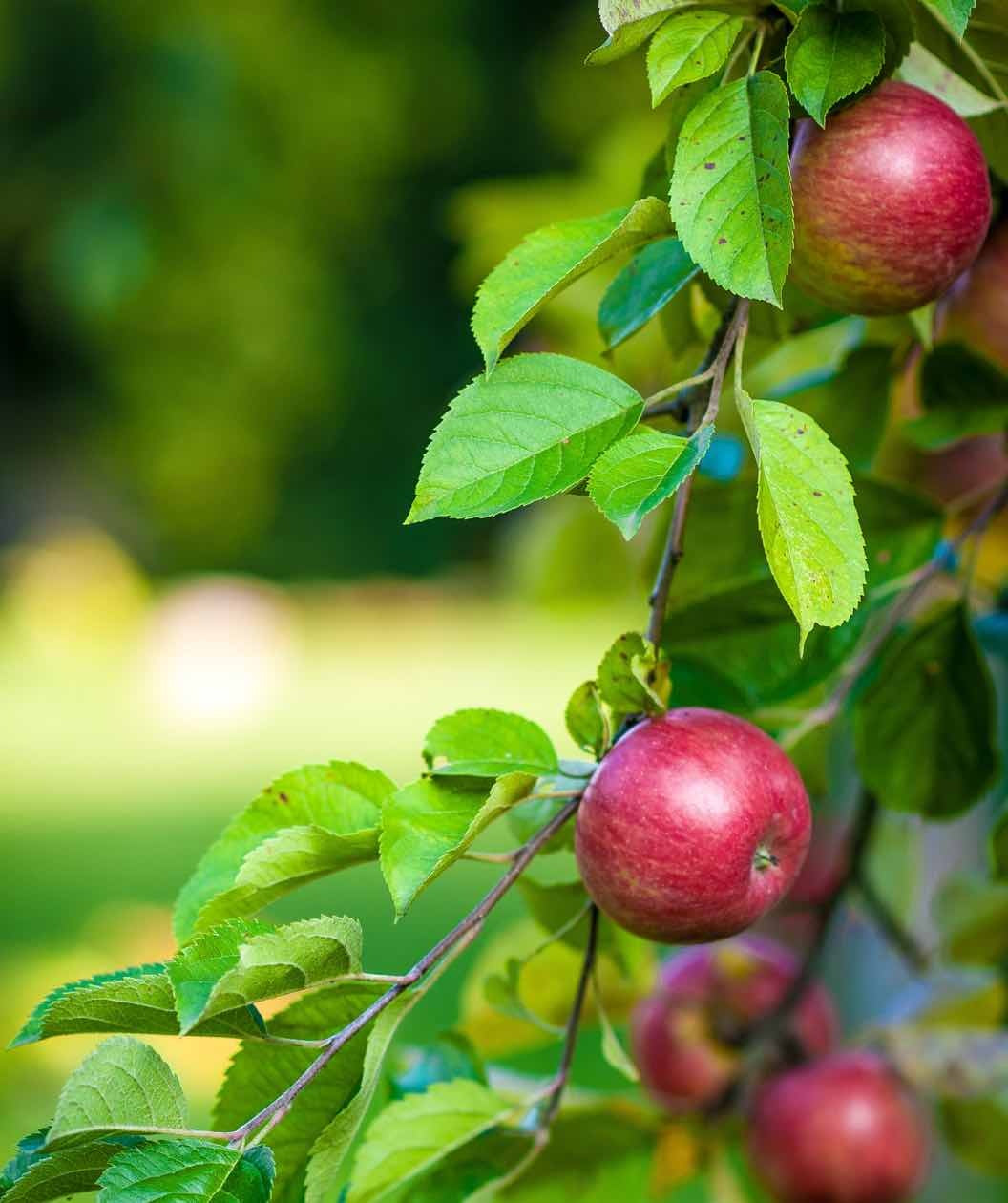


- Pink flower buds evolve into stunning white blooms every spring
- Foliage in spring appears green lasting through summer, come fall shades of golden yellow take hold before dormancy sets in
- Deep red apples appear following the spring blooms, they ripen in fall and are great for pies or sauces
- Blooms in spring invite pollinators of all types while the fall fruits call to birds for a delicious feast
- Plant in locations where spring blooms may be seen from any angle, utilize the Macoun Apple in themed fruiting gardens or planted with other apples for a huge harvest each year
- In order to produce apples the Macoun will require a pollinator partner, plant Granny Smith, Fuji, or Cox's Orange Pippin in order for apples to grow
- Hand Selected, Fresh from our Grower
- Ships on our trucks because of the size of the tree - does not fit in a box
Growth Facts
- Hardiness Zone: 3 - 9
- Mature Height: 12 - 15' tall
- Mature Width: 12 - 15' wide
- Exposure: Full sun
- Spacing: 12 - 15' apart
- Pink flower buds evolve into stunning white blooms every spring
- Foliage in spring appears green lasting through summer, come fall shades of golden yellow take hold before dormancy sets in
- Deep red apples appear following the spring blooms, they ripen in fall and are great for pies or sauces
- Blooms in spring invite pollinators of all types while the fall fruits call to birds for a delicious feast
- Plant in locations where spring blooms may be seen from any angle, utilize the Macoun Apple in themed fruiting gardens or planted with other apples for a huge harvest each year
- In order to produce apples the Macoun will require a pollinator partner, plant Granny Smith, Fuji, or Cox's Orange Pippin in order for apples to grow
- Hand Selected, Fresh from our Grower
- Ships on our trucks because of the size of the tree - does not fit in a box
Growth Facts
- Hardiness Zone: 3 - 9
- Mature Height: 12 - 15' tall
- Mature Width: 12 - 15' wide
- Exposure: Full sun
- Spacing: 12 - 15' apart
Planting Zones
Hardiness Zone: 3-9
How Does Shipping Work?
Bower & Branch Trees, the real BIG trees, don’t fit in a box! Our big trees, sizes XL and bigger, require expert delivery and care, that means our extra-large trees are shipped on Bower & Branch trucks. We are the only ones who know how to ship our big and bigger trees and plants with tender loving care. We deliver your trees and plants directly to you. Ask Bower & Branch about planting services – we'd be happy to assist in installation.
*For Big trees and Shrubs, Size XL and bigger: Review our Seasonal Shipping Timelines and Policy here.
Your trees and plants are grown across the United States at various Bower & Branch Growers. Depending on your location, your plant orders may be shipped from various locations. Please expect orders with multiple items to be delivered over a number of days as a result. Orders made up of numerous items or selections will not arrive at your home on the same day.
Shipping Delays:
From time to time, Bower & Branch Growers may determine to delay order shipment based on various factors for plant health. Weather in your region, as well as, where your plants are grown, is always considered when shipping. Extreme weather conditions may delay some or all of your order. Bower & Branch allows our Growers to make final shipping decisions based solely to benefit your trees and plants’ health and success.
How Does Sizing Work?
The size of our trees have nothing to do with the container size like you may find elsewhere–big doesn't mean just height - it’s also vigor, age, and overall health. Other online retailers are going to tell you that a plant is a seven gallon, that means nothing to your tree or plant (or you.)
Our trees for sale online are graded on large, x-large, and even bigger sizes. This is because our trees are sized by their age—the higher the letter, the more mature the tree. The age determines the trees’ overall height, size of the trunk and the overall branch density.
All of these characteristics are what you should be looking for when choosing a tree for immediate impact and instant curb appeal. Our extra-large tree and plant sizes are sure to wow you and your neighbors!
See the size guides below.






Our Guarantees
3-YEAR-TREE GUARANTEE:
Bower & Branch offers a Three-Year Tree Guarantee on all of our trees, sizes X-Large and up. Only the finest and the most experienced growers are awarded the opportunity to grow for Bower & Branch, so we offer the best guarantee available.
If your tree(s) should fail for any reason during the three-year guarantee period, you will receive an online gift card in the amount that you originally spent on the tree.* You can then use this online gift card for any Bower & Branch Purchase.
* Bower & Branch provides online gift cards in the amount of the original purchase price of the tree(s). The amount does not include any additional costs such as delivery, planting, tax, or any other products or services. Online gift cards can be applied towards any Bower & Branch purchase on BowerandBranch.com and have no expiration dates. Bower & Branch does not guarantee tree replacement or availability of any desired product at any time. Cash refunds are not offered. Bower & Branch requires that all original tags and receipts are present when a guarantee request is initiated. The Bower & Branch Three-Year Guarantee only applies to plant material that has been planted in the ground. Container plantings are NOT covered.
At Bower & Branch, we do our best to honor all guarantee fulfillment requests to ensure customer satisfaction. However, we reserve the right to refuse the request if the required guarantee steps were not satisfied. Bower & Branch also reserves the right to deny any guarantee fulfillment request that is made as a result of animal damage, problems with plant hardiness and zone issues, or acts of nature (snow storms, hurricanes, and similar).
Reach out to a Plant Whisperer with any questions:
- Email: plantwhisperers@bowerandbranch.com
- Phone: 866-873-3888
- Or via Online Chat




